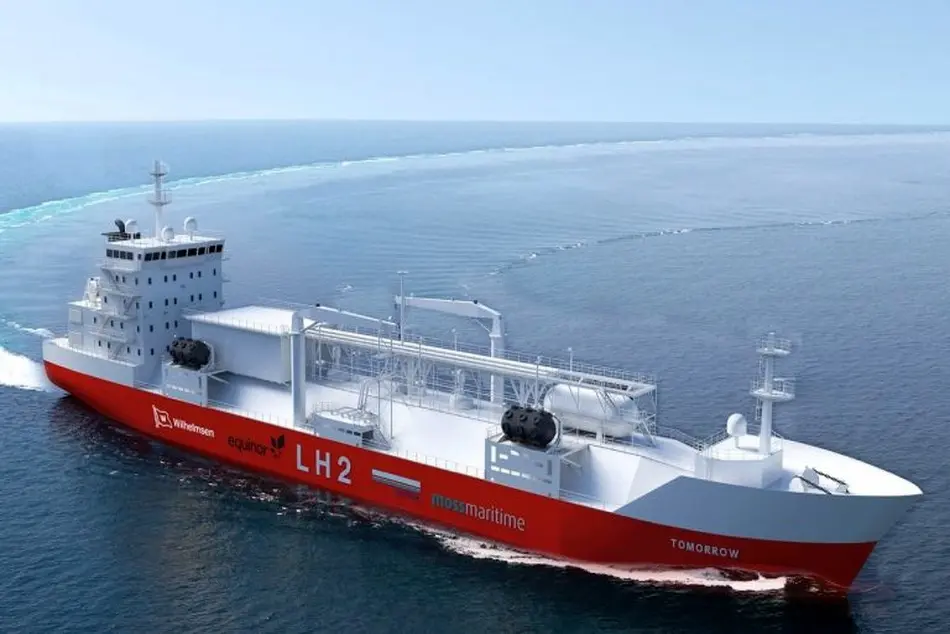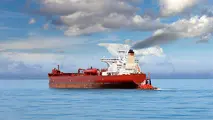Made in America: The U.S. Dredging Market, a Strategic Jones Act Industry
The United States dredging industry stands as one of the most competitive, efficient, and strategically vital sectors of the maritime economy. As part of the Jones Act fleet—the original Build America, Buy America industry — it not only strengthens our ports and waterways but also anchors thousands of middle-class jobs, spurs shipbuilding across the Gulf and East Coasts, and delivers exceptional value for taxpayers.

The United States dredging industry stands as one of the most competitive, efficient, and strategically vital sectors of the maritime economy. As part of the Jones Act fleet—the original Build America, Buy America industry — it not only strengthens our ports and waterways but also anchors thousands of middle-class jobs, spurs shipbuilding across the Gulf and East Coasts, and delivers exceptional value for taxpayers.
The last several years have ushered in a quiet renaissance. Dredging firms large and small are modernizing their fleets, expanding capacity, and deepening critical U.S. channels faster than ever before. This work underpins both national commerce and maritime security, ensuring that U.S. vessels, U.S. workers, and U.S. shipyards remain at the center of our nation’s infrastructure future.
A Competitive Industry
According to the 2024 U.S. Dredge Report, 56 companies were awarded U.S. Army Corps of Engineers dredging contracts, 20 large businesses and 36 small businesses. This underscores the industry’s strong presence both in capability and competition. The report, authored by Michael Gerhardt, analyzed 136 projects and compared winning bids to government estimates and the Government Estimated Awardable Range (GEAR). The findings were remarkable:
- 88 bids came in below the government estimate
- 123 projects (90%) were awarded below the GEAR
- Average savings: 25% per project
- Total estimated taxpayer savings: nearly $829 million
Total contract awards reached an all-time high of $2.4 billion in 2024, extending a three-year growth streak. Roughly 41% of all awards went to hopper or dustpan dredges, with the balance supporting cutter suction, clamshell, and other dredging work.
Small businesses also had a landmark year, winning $442 million in contracts—an 85% increase year-over-year and the highest share (31%) in a decade. Each project attracted an average of three bidders, with some seeing as many as six—an unmistakable sign of a vibrant, competitive marketplace.
A Deepening Gulf: Alabama’s 50-Foot Achievement
A prime example of U.S. maritime progress is the Port of Mobile, which this fall celebrated the completion of its channel deepening to 50 feet—a first for any Gulf of Mexico port. The MV Sakizaya Power was the first deep-draft bulker to call the newly deepened port, marking a major milestone in American maritime infrastructure.
This achievement stemmed from bold cooperation at every level of government.
- In 2019, Alabama enacted the Rebuild Alabama Act (HB 2), raising the gas tax by ten cents per gallon to fund critical transportation projects. Under that law, $11.7 million annually was dedicated to port and dredging improvements, accounting for about 25% of total funding.
- On the federal side, the then Alabama U.S. Senator Richard Shelby secured $274.3 million through the FY2020 U.S. Army Corps of Engineers Work Plan.
The Corps and private dredging firms moved swiftly—and by October 3, 2025, the Alabama Port Authority announced that the Mobile Ship Channel had officially reached 50 feet. Work now continues to widen the turning basin near the Mobile Container Terminal, with dredged material being reused for shoreline restoration on Dauphin Island—the process known as beneficial use of dredged material.
Billions in Investment in New U.S.-Built Vessels
U.S. dredging companies are investing billions in new Jones Act–compliant vessels, strengthening both domestic capacity and national shipbuilding.
The Dutra Group of San Rafael, California, is building a 10,464-cubic-yard trailing suction hopper dredge, the Adele, at Eastern Shipbuilding Group in Panama City, Florida. Scheduled for delivery in late 2028, the Adele will feature a V-shaped hopper, advanced energy-efficient propulsion, and 13,290 horsepower of total installed power. The vessel’s design combines performance, fuel efficiency, and quick offloading capability—all hallmarks of modern U.S. dredging technology.
West Coast based Curtin Maritime of Long Beach is nearing completion of its next-generation DB Catalina, a hybrid-electric clamshell dredge modeled after its successful DB Avalon. Built in partnership with The Shearer Group, Inc. of Houston, the DB Catalina features a 100-cubic-yard bucket, a 160-metric-ton capacity, and fully electric plug-in capability for zero-emission operations.
In September 2025, Curtin Maritime expanded further, announcing a $160 million partnership with Arc, an electric power boat building company, to construct a new fleet of hybrid-electric ship-assist tugboats in collaboration with Snow & Co. Shipyard. Each tug will deliver more than 4,000 horsepower powered by a 6 MWh battery system, marking a major step toward decarbonized U.S. port operations.
The story of America’s dredging industry is one of competition, innovation, and national strength. Every dredge contract, every U.S.-built vessel, and every deepened channel reinforces the foundation of a self-reliant, modern maritime economy.
In an era when global shipping is dominated by foreign fleets and State-subsidies, the U.S. Jones Act dredging industry remains proudly American-built, American-owned, and American-crewed—and it delivers measurable returns to taxpayers. With over $3 billion in new vessel investments, record levels of competition, and close cooperation between the federal government and private industry, this sector exemplifies what Maritime Made in America truly means.
As the nation continues to rebuild its shipyards, expand port capacity, and strengthen its maritime workforce, the dredging industry will remain at the heart of that progress—keeping America’s waterways open, resilient, and ready for the future.



